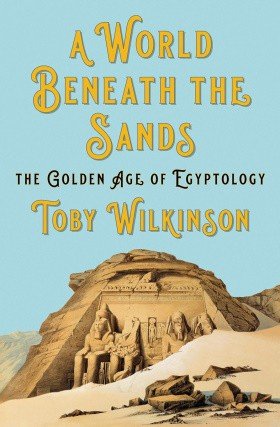50. ‘Ozymandias’ is a Greek corruption of the ancient Egyptian ‘Usermaatra’, the throne name of Pharaoh Ramesses II, for whom the temple had been built. Today, the entire edifice is known as the Ramesseum.
51. In the Napoleonic Description de l’Egypte, the second volume of plates of Egyptian antiquities, published in 1812, includes a map of western Thebes (plate 19) entitled ‘Thèbes. Memnonium’. It marks the entire edifice as ‘Tombeau d’Osymandyas, désigné par les voyageurs sous la dénomination de Palais de Memnon’. The map marks the location of two colossal heads, plus a pedestal and a fallen colossus, labelled ‘Restes de la statue d’Osymandyas’. One of the colossal heads is illustrated on plate 32.
52. Long (1832), I: 253.
53. Belzoni (1821): 21.
54. Quoted in Belzoni (1821): 26.
55. Quoted in Belzoni (1821): 22, 24.
56. In the introduction to his own account, Belzoni rather pointedly noted: ‘I am not an Englishman, but I prefer that my readers should receive from myself, as well as I am able to describe them, an account of my proceedings . . . rather than run the risk of having my meaning misrepresented by others’ (Belzoni, 1821: v). By ‘others’ he no doubt meant Salt.
57. Belzoni (1821): 46.
58. Reid (2002): 40.
59. Belzoni (1821): vii.
60. While Belzoni was uncovering a world beneath the sands, his wife Sarah, ‘took the opportunity, while in Egypt, to observe the manners of the women in that country’; the result, published in an appendix to her husband’s compendious memoir (Belzoni, 1821: 441), was a ‘short account of the women of Egypt, Nubia, and Syria’ – perhaps the first such study by a Westerner.
61. Quarterly Review, XVIII (1817–18): 368.
62. Quarterly Review, XIX (April 1818): 204.
63. Hogg (1933), I: 76.
64. Among the likely sources of inspiration for Shelley’s poem are Pococke’s Description and Denon’s Travels in Upper and Lower Egypt. In particular, Denon’s description of the site of Oxyrhynchus in Middle Egypt as ‘a boundless barrenness, which oppresses the mind by immensity of distance, and whose appearance, where level, is only a dreary waste’ employs imagery uncannily similar to Shelley’s language; see Waith (1995).
65. Manley and Rée (2009).
66. Manley (2001): 189.
67. Usick and Manley (2007): 3.
68. Usick and Manley (2007): 1.
69. Usick and Manley (2007): 1. The account of Caviglia’s work at Giza, written by Salt, only came to light in 2002 during a reorganization at the British Museum.
70. After the translation in Ray (2007): 170.
71. Courier de l’Egypte, 37 (le 29 fructidor, an VII), quoted in Thompson (1992): 22.
72. Tyldesley (2005): 52.
73. Henniker (1823): 139.
74. Saulnier (1822): 76.
75. On his visit in 1820, Henniker was ‘lost in admiration, even though the concomitant filth hill is nearly on a level with the top of the portal’ (Henniker 1823: 119).
76. Saulnier (1822): 77–8.
77. Saulnier (1822): 77–8.
78. Little is known about Lelorrain, other than his expedition to remove the Dendera zodiac.
79. Saulnier (1822): 84.
80. Saulnier (1822): 84.
81. Champollion (1986): 154–5.
ONE:
Description and decipherment
1. Young to William Hamilton, 29 September 1822, quoted in Robinson (2006): 209.
2. Anon. (1822).
3. Robinson (2012): 142.
4. Nowinski (1970): 33.
5. Nowinski (1970): 66.
6. Ceram (1978): 80.

























